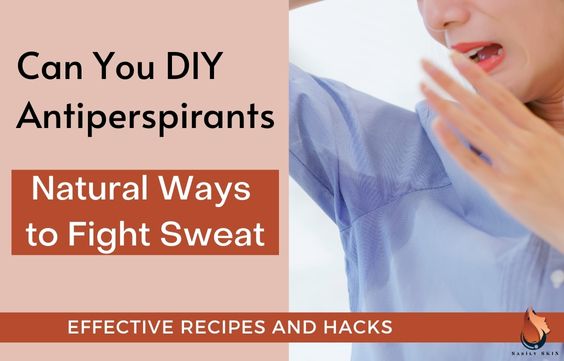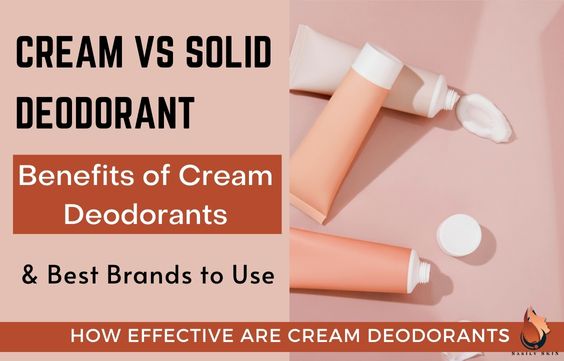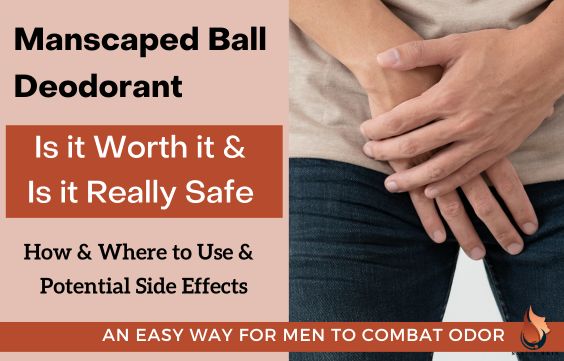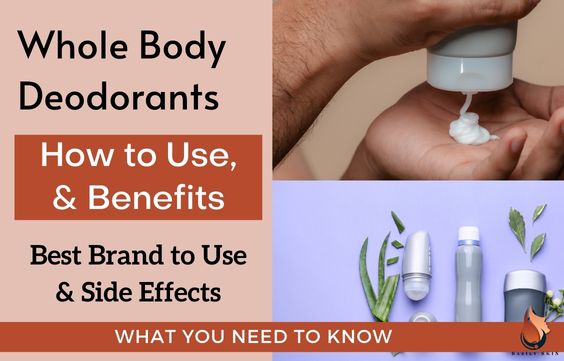Can You Make DIY Antiperspirants- Best Ways to Fight Sweat

So here’s the thing, you can make DIY deodorants and sweat absorbers at home, but you cannot safely make true DIY antiperspirants. So DIY antiperspirants are not really a thing, but DIY deodorants are!
DIY Antiperspirants vs DIY Deodorants
Antiperspirants are products that block your sweat glands while deodorants are products that mask odor and help to absorb sweat. You can make DIY deodorants but you cannot make DIY antiperspirants.
The only studied, skin-safe ingredient that is approved for blocking sweat glands is aluminum. This ingredient has been studied and approved for use in various, very specific forms, solutions, and concentrations.
And, while you can purchase aluminum over the counter, the form that you will get is most likely not safe for your skin.
Most of us do not have the equipment, solutions, and expertise necessary to stabilize and formulate aluminum into skin-safe versions that are usually used in antiperspirants.
Therefore, the DIY recipes that you will come across will be for sweat absorption and masking odor rather than actual sweat blocking.
For underarm odor check out my article on 10 Quick & Easy DIY Natural Remedies For Smelly Armpits
Sweat Absorbing Ingredients
Sweat-absorbing ingredients are those that will absorb moisture and keep your skin dry for as long as possible. The most common ones are:
- Arrowroot powder
- Cornstarch
- Tapioca starch
- Baking soda
You can apply these ingredients directly onto your armpits or you can mix them with other ingredients.
These ingredients will help to control bacteria and odor by keeping your skin dry. However, the effects will not last as long as antiperspirants do and you will need to reapply them more often. They also will not work very well if you sweat excessively or suffer from hyperhidrosis.
But, for moderate to average sweaters, these ingredients can be added to DIY recipes to use under their arms instead of traditional antiperspirants. Many people can be allergic or sensitive to aluminum. Others simply prefer organic ingredients on their skin. Either way, these are great alternatives to aluminum-based products to help with sweat control.
You can check out my articles below to learn more about how some of these ingredients work:
Cornstarch For Smelly & Sweaty Armpits- Benefits & Risks
DIY Baking Soda & Lemon for Underarms: Benefits & Risks
Baby Powder for Armpit Odor & Sweat – Benefits & Risks
Best DIY Deodorant Recipes For Sweat Absorption
Note: Many recipes will contain more than one sweat-absorbing ingredient, and that’s okay!
Also, baking soda is one of the most effective ingredients as it not only soaks up sweat, but it also has antibacterial and antifungal properties.
However, some people’s skin can be easily irritated by it. So, for either of these recipes, feel free to lessen the amount that you use or leave it out if you prefer.
1- Simple Essential Oil & Baking Soda Deodorant (For Men & Women)
Ingredients/Materials:
- ½ cup coconut oil (softened)
- ½ cup baking soda
- 40–60 drops of essential oils — female (lavender, lemon and sage) or male (cypress, rosemary and bergamot)
- Empty deodorant containers or glass jar
Directions:
- Add the baking soda to the softened coconut oil and mix until well combined. If you are sensitive to baking soda, you can substitute it with arrowroot powder, or you can use a combination of the two so that you use less baking soda.
- Add the essential oil of your choice
- Transfer the mixture to your storage jar and allow it to solidify.
Related Article – Best Essential Oils for Armpits & How to Use Correctly
2- Lavender Grapefruit Arrowroot Deodorant
Ingredients/Materials:
- 2 1/2 tbsp unrefined coconut oil
- 2 1/2 tbsp unrefined shea butter
- 1/4 cup arrowroot starch/flour
- 1 1/2 tbsp baking soda
- 6 drops of lavender essential oil
- 6 drops of grapefruit essential oil
- 1 drop of tea tree essential oil (optional – leave out if you are sensitive to this oil or experience irritation)
- Glass bowl
- Saucepan
- Spoons
- Storage Jar
Directions:
- Place the coconut oil and shea butter in the glass bowl and then place the bowl inside a medium saucepan.
- Add water to the saucepan (enough to surround bowl but not to overflow it) and bring it to a boil.
- As the water is heating up, ensure to stir coconut oil and shea butter until it melts.
- Once melted, add in the arrowroot starch, baking soda and essential oils.
- Mix everything until well combined.
- Transfer to your storage container and allow to cool at room temp or in the fridge until it’s reached a solid state.
- Cover and store, and use as needed.
- Store in a cool, dry place for up to 6 months.
3- Beeswax and Cornstarch Deodorant (For Men & Women)
Ingredients/Materials:
- Coconut Oil – ⅓ Cup
- Corn Starch – ⅓ Cup
- Essential Oils – 30 Drops
- Shea Butter – 2 Tablespoon
- Baking Soda – 2 Tablespoon
- Beeswax Grated Or Pellets – 3 Tablespoon
Directions:
- Melt the shea butter, beeswax, and coconut oil in a small pan over low heat until everything has melted. Keep stirring until combined.
- Remove from the heat when totally melted, then mix in the cornstarch and baking soda. You can leave out the baking soda if you need to.
- Add in your essential oils next. You can use any scent of your choice or you can opt to leave this out for an unscented product.
- Mix rapidly so that everything is well combined. The mixture will start to thicken by now.
- Fill up your deodorant containers with the mixture, then wait until the deodorant is fully set (this usually takes a couple of hours).
- Put the lid on, store and apply the deodorant like you normally would.
Related Article – Best Antiperspirants For Your Face – Read Before Trying
Sweat-Fighting Tips
- Remember that it is normal for you to sweat and that there is nothing to be ashamed of. However, if you need sweat protection, and you prefer to keep it organic, then using natural ingredients is a great move.
- Do your research. Not all organic ingredients will work the same. Read and research about which ingredients work best with others so that you can be sure your skin will not be irritated and that you will see actual results.
- Be patient. Remember that sweat absorption and sweat blocking are very different things. Ingredients like arrowroot, baking soda, cornstarch, etc and DIY, natural deodorants will absorb sweat but they will not stop you from sweating altogether. You will need to apply them more often to remain dry.
- Test your ingredients out first. Even natural ingredients can cause irritation and allergic reactions, so do patch tests on your skin before applying any DIY products all over sensitive or even normal areas of skin.
- Don’t be afraid to change up your scents or keep your recipes unscented if you need to. Since these are DIYs, you really can put almost any suitable ingredient in them to best suit your needs.
For some actual antiperspirants check out my reviews below:
Neat 3B Face Saver Gel Review- Is It Safe & What To Expect
Anhydrol Forte Review- How Effective Is It & Side Effects
Duradry – Are They Effective, How to Use & Side Effects
Certain Dri Review- How to Use, Risks & What to Expect
Odaban Spray: Is it Effective, Safe & What to Expect
Driclor: Is it Safe, Side Effects & Better Alternatives
Perspirex: How to Use, Effectiveness, Risks & Side Effects
Sweatblock Wipes- Are They Safe, Benefits, & Side Effects
Vanicream Deodorant Review – Is It Effective & Safe To Use
Carpe Deodorant Review- Does it Work, Benefits & Effects
Best Antiperspirants For Feet- Risks & How to Use
What are Antibacterial Deodorants & Who Should Use Them
Sources
Antiperspirant Basics – International Hyperhidrosis Society | Official Site







